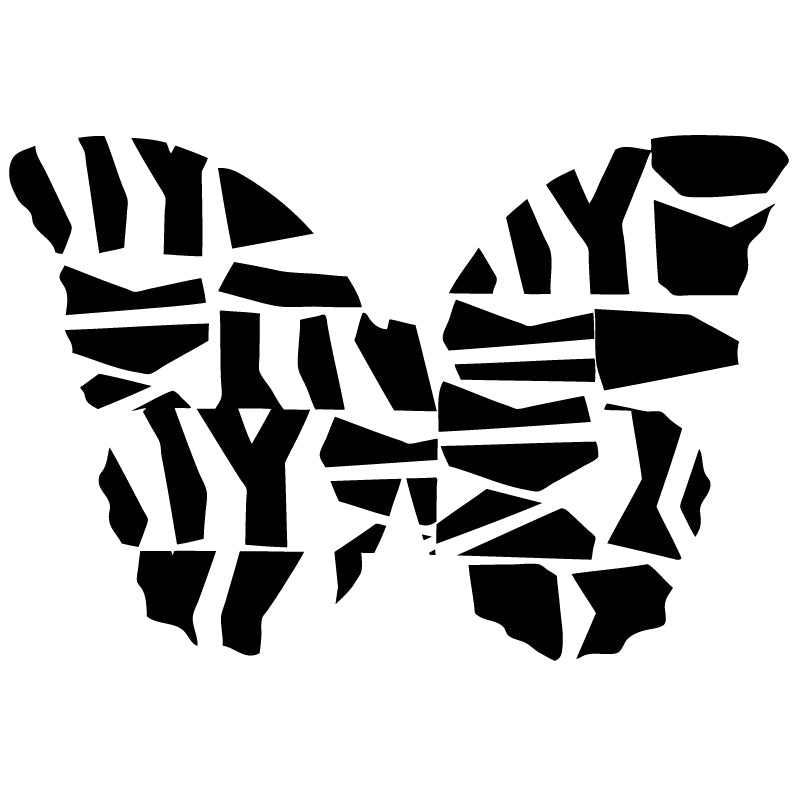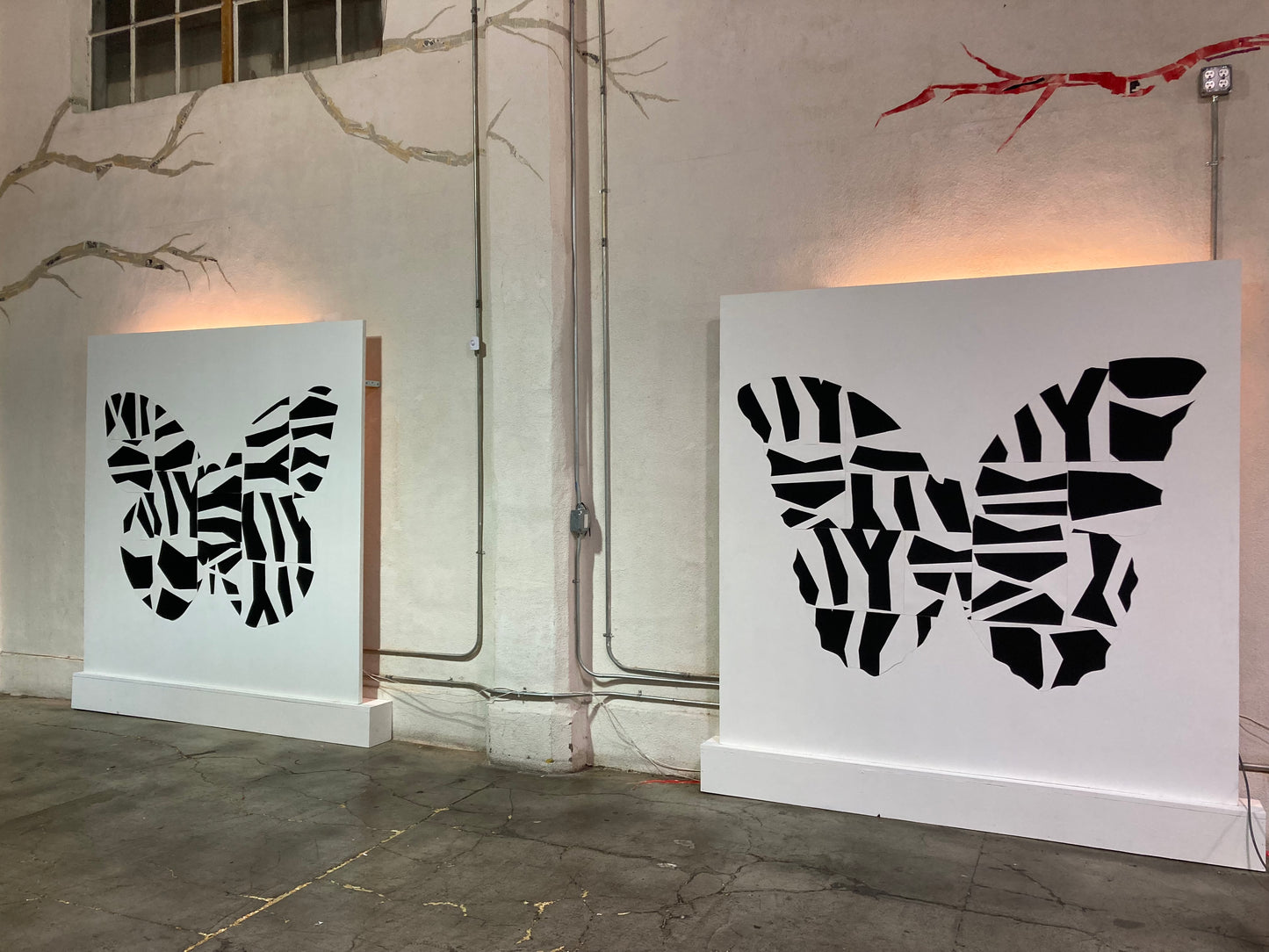Razzle Dazzle Melanism
Razzle Dazzle Melanism
Mary Burger
Screen print on Stonehenge paper mounted on panel
78" x 78" each
2014
The mural installation Razzle Dazzle Melanism combines two different camouflage concepts:
— Razzle dazzle camouflage was developed by the Allied military in World War I to disguise warships. Before the invention of radar and sonar, ships were painted with irregular geometric patterns to confuse observers about their size, purpose, and direction of movement. Like zebra stripes, razzle dazzle camouflage isn’t about hiding, it’s about creating disorientation.
— Industrial melanism refers to the way certain moth species developed darker wings during the early industrial revolution in England, a response to the soot from burning coal that darkened the trees, buildings, and other surfaces where moths roosted. Melanin, the pigment that darkened the moths’ wings, enabled them to blend in against dark backgrounds and evade predators.
I’m combining these concepts to explore the intersections of natural and technological adaptations. The impact of human development is causing abrupt and dramatic changes to habitats that have evolved over millions of years. What adaptations can creatures in the wild use to survive this rapid change? What adaptations can humans learn from our wild co-habitants, to respect the patterns and constraints of the natural world?
To make the murals, I created geometric patterns reminiscent of razzle dazzle camouflage and screen printed them onto paper, then collaged the prints in the shapes of butterfly silhouettes on large panels.
Butterflies are emblematic of the tensions between adaptation and change. Many species are vulnerable to habitat destruction, as they rely on specific plant species to survive—in California, people often recognize the monarch butterfly and its caterpillars that feed exclusively on milkweed. Butterflies also have some of the most spectacular camouflage in the animal world, with species that disguise themselves as leaves, bark, an owl’s face, or a different, poisonous butterfly species, all to evade or deter predators.
Razzle Dazzle Melanism tries to conjure a world in which wild species can adapt to the changes caused by human development, and humans can adapt our own behavior to live as co-habitants with the irreplaceable creatures of this planet.




